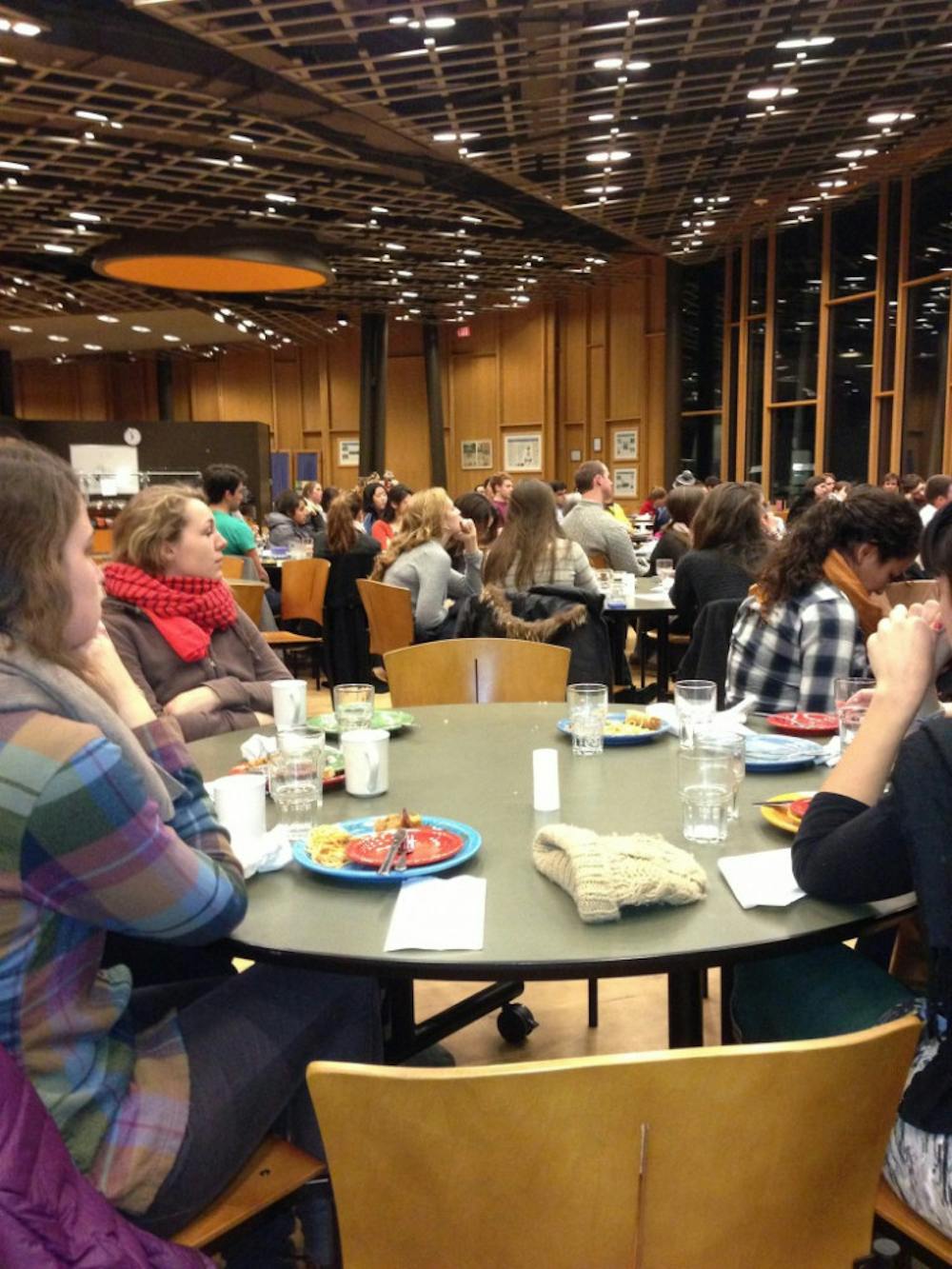Alumni Appreciation week kicked off with a dinner on Monday, March 4 in Atwater Dining Hall hosted by Mark Benz ’56 and Eric Benz ’88. Throughout the week students are encouraged to head to the Davis Family Library to write thank-you notes to donors. This initiative is part of the annual giving plan and is designed to thank donors to the College and to raise awareness among students about how donors make their college experience possible.
Among peer institutions, the College ranked sixth in the dollar value of total giving last year but was second in the giving rate of its alumni. 50.6 percent of college alumni donated in 2012, just trailing Williams College, which received donations from 53.3 percent of its alumni.
While the College fell short of its 56 percent participation rate in 2012, the College Advancement and Development offices are hoping to reach an alumni-giving rate of 58 percent for 2013 through fundraising initiatives such as Spark a Match. Through the “Spark” challenge, an anonymous donor has promised to donate $20,000 if 2,000 alumni donate by March 31.
“The Spark program is something people respond to pretty well,” said Maggie Paine, director of advancement communications. “A time limit is effective in helping people who are planning on giving anyway to give their gift now, rather than waiting until [the end of the fiscal year] on June 30.”
The College raised just over $42.4 million last year. While this figure is down slightly from $43.2 million in 2011, this change can be attributed to “normal fluctuations in year-to-year fundraising,” according to Associate Vice President for Development Megan Williamson.
The largest overall donation the College received in 2012 was the gift of 377 acres of land by Will Jackson ’51, a member of the Board of Trustees, last January. The donated property, located west of the campus along Route 125, is worth $4.7 million.
The College also received $1.5 million for the construction of the new field house, which constitutes its largest cash donation received in 2012.
“The field house was an important [fundraising] campaign last year,” said Jim Keyes, the vice president for college advancement. “The trustees made the decision to build a field house, but felt strongly that [the project] not be funded through debt. It cost about $46 million to build, and we raised 100 percent of that.”
The offices of College Development and Advancement Services have sought to develop ways to help donors realize the direct impact of their gifts to the College.
“What I’m seeing as a fundraiser is that increasingly, people are interested in restricting their gifts and knowing exactly where their money is going to go,” said Williamson. “But Middlebury has cultivated a high level of unrestricted annual giving, among parents in particular, who know that the impact for their student is going to be immediate and they want to give the College the greatest flexibility to do the best thing for their students, and we really try to cultivate that.”
MiddStart is an example of a recent fundraising campaign designed to make connections between donors and current students, which helps entrepreneurial students find funding for their projects through gifts from alumni and friends of the College.
“MiddStart is a way for annual fund donors to see their impact and to actually connect with students here on campus and support a student project and then watch it be carried out,” said Paine. “It’s been rewarding, and we are getting donors who have no connection to the College, other than they are interested in the project or they know the student.”
Charitable contributions to colleges and universities in the United States increased 2.3 percent in 2012, according to the Voluntary Support of Education survey, conducted by the Council for Aid to Education. At $31 billion, the total is still below 2008’s historical high of $31.6 billion.
College Seeks to Attract Donors

Comments



